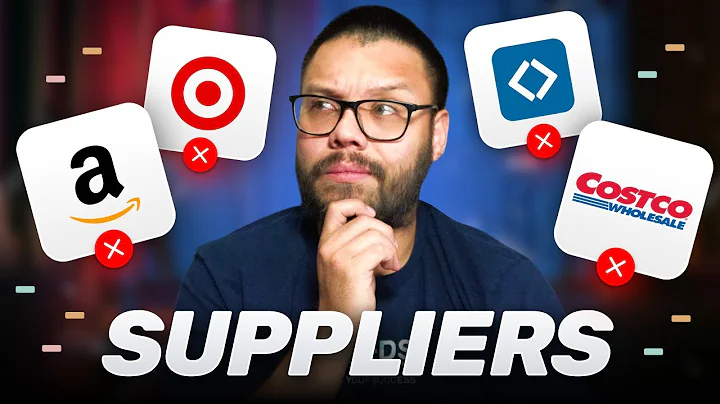Boosting Dropshipping Profits: A Profit-First Mindset
Table of Contents:
- Introduction
- Understanding the Importance of Profit
- The Difference between Revenue and Profit
- Factors Affecting Profit Margins
4.1. Negotiating with Suppliers
4.2. Offering Free Shipping
4.3. Optimizing Ads for Profit
- Scaling Up and the Impact on Margins
- Balancing Profit and Growth
- The Long-Term Benefits of Profit
- How Profit Affects Business Valuation
- Shifting Focus from Revenue to Profit
- Actionable Steps to Adopt a Profit-First Mindset
- Success Story: Making the First Sale
- Listener Review: The Power of Mindset and Positivity
- Conclusion
Understanding the Importance of Profit
Profit is the lifeblood of any business. While revenue may seem like the most important metric, focusing on profit tells the real story. In this article, we will explore the significance of profit margins in a dropshipping business and how it shapes the long-term success of your venture.
The Difference between Revenue and Profit
Revenue is the total amount of money generated from sales, while profit is what remains after deducting all the expenses and costs associated with running the business. It is essential to understand the distinction between revenue and profit to make informed decisions and gauge the financial health of your dropshipping business.
Factors Affecting Profit Margins
Several factors influence profit margins in dropshipping. One key factor is negotiating with suppliers to secure better margins. By building rapport, highlighting the value you bring to their brand, and emphasizing the mutual benefits of a higher margin, you can increase your profitability.
Another factor to consider is offering free shipping. While customers may be more inclined to make a purchase when free shipping is offered, it is crucial to account for the shipping costs in your margins to ensure profitability.
Optimizing your ads for profit is also vital in maximizing your revenue. By focusing on the bid strategy that prioritizes higher revenue conversions, you can generate more profitable sales and increase your return on ad spend.
Scaling Up and the Impact on Margins
As your dropshipping business scales, it is important to recognize that your percentage net margin may decrease. Scaling comes with increased operational costs, such as advertising expenses, staff requirements, and software fees. However, if your increase in sales volume compensates for these costs, your overall profitability can still rise. It is essential to strike a balance between scaling your business and maintaining a satisfactory profit margin.
Balancing Profit and Growth
As a business owner, it is crucial to determine your long-term goals and how profit and growth align with them. While maximizing profit in the short term may seem tempting, reinvesting some profit back into the business can lead to more substantial growth in the future. Striking the right balance ensures sustainable profitability and continued business growth.
The Long-Term Benefits of Profit
Building a high-profit dropshipping business offers numerous advantages. Not only does it allow you to leave your nine-to-five job and live life on your terms, but it also attracts higher sale valuations if you decide to sell your business in the future. A profitable business with a strong track record can command a higher sale price, providing you with an excellent return on investment.
How Profit Affects Business Valuation
When assessing the value of a dropshipping business, buyers and brokers often look at the profitability metrics, such as net profit and earnings before interest, taxes, depreciation, and amortization (EBITDA). The net profit and EBITDA contribute significantly to the business's valuation, with higher margins and consistent profitability leading to more substantial valuations.
Shifting Focus from Revenue to Profit
To adopt a profit-first mindset, it is crucial to shift your focus from revenue to profit. While revenue may seem enticing, it does not tell the full story of your business's financial performance. Start by tracking metrics like average profit per order and cost per acquisition to ensure profitability on each sale. Working closely with your accountant and analyzing your suppliers' profitability can provide valuable insights for optimizing your profit margins.
Actionable Steps to Adopt a Profit-First Mindset
To shift to a profit-first mindset, here are some actionable steps you can take:
- Understand that building a high-profit business is more important than focusing solely on revenue.
- Educate yourself on profit-focused strategies through resources like the "Home Turf Advantage" book.
- Track and analyze your numbers, including average profit per order and cost per acquisition.
- Optimize your ads for profit by setting bid strategies that prioritize profitability.
- Negotiate with suppliers to secure better margins and account for shipping costs in your pricing.
- Balance profit and growth by reinvesting some profit back into the business to drive long-term success.
Success Story: Making the First Sale
One success story worth highlighting is Ben, a dropshipper who recently made his first sale while on a family holiday. Despite being away from work, Ben received an order worth £679, showcasing the flexibility and profitability of dropshipping. This success serves as a reminder that dropshipping allows you to make money from anywhere in the world, providing the freedom and autonomy you desire.
Listener Review: The Power of Mindset and Positivity
Katy, a member of the dropship Unlocked Launchpad community, expressed her appreciation for the podcast's mindset and positivity. She credits the podcast hosts, Lewis and James, for starting her Mondays with inspiration and valuable information. The podcast's emphasis on mindset and positivity resonated with Katy and motivated her in her dropshipping journey.
Conclusion
While revenue is important, profit is what truly matters in a dropshipping business. It determines the financial health, growth potential, and long-term success of your venture. By adopting a profit-first mindset, optimizing your profit margins, and balancing profit with growth, you can build a high-profit dropshipping business that offers both financial stability and freedom.



















